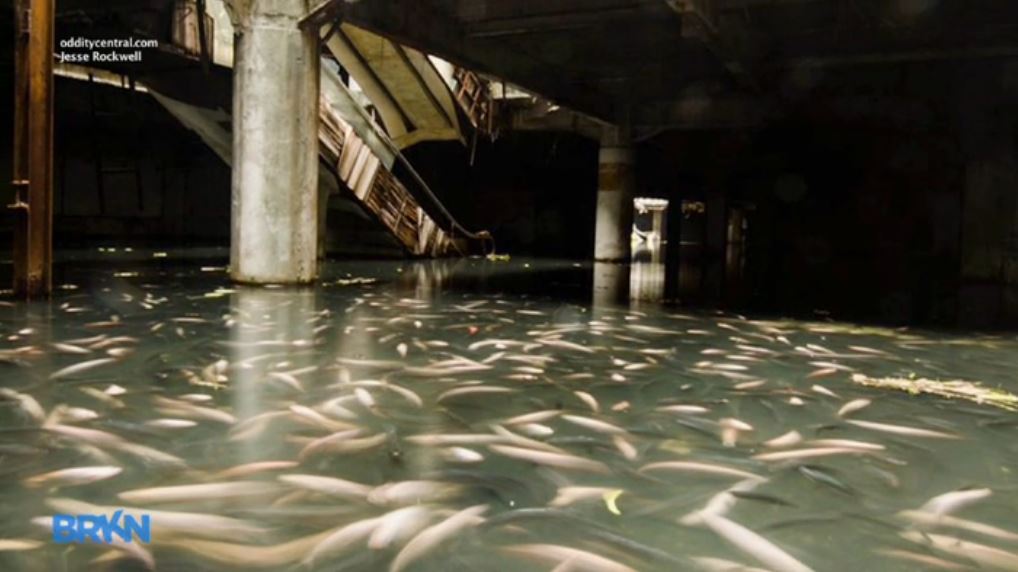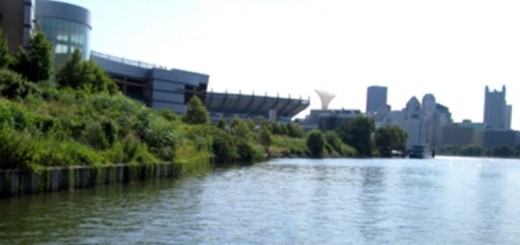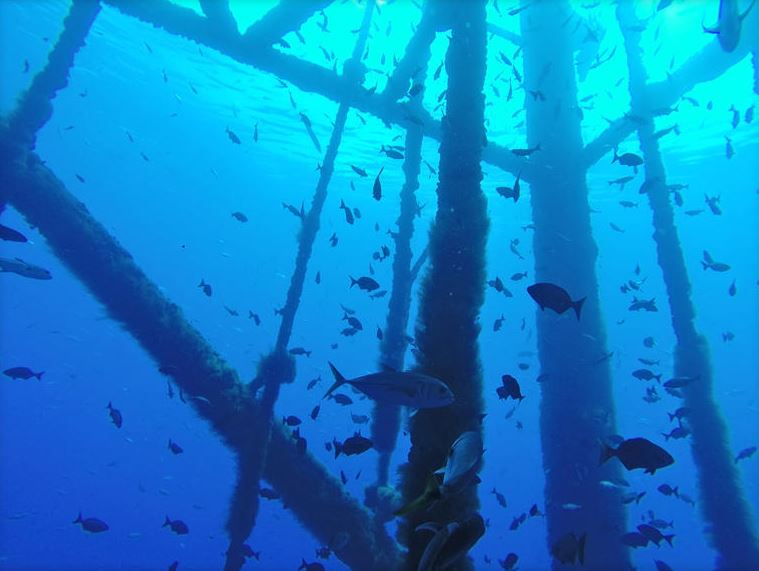Ghosts, Ghouls, and Goblin-Sharks! Fish Habitat at its Spookiest!
It’s that magical time of year when ghosts and ghouls and goblin-sharks come out to steal your sole: Halloween! And while we can probably name any number of reel scary, spooky, or just plain horrifying fish species (I’m looking at you Dragonfish), there are many areas where fish live that might also give you the creeps! Stay perched on the edge of your seat while I dive into the details of a few of these terrifying, and sometimes ghostly, habitats.
Up first: deep-sea habitats
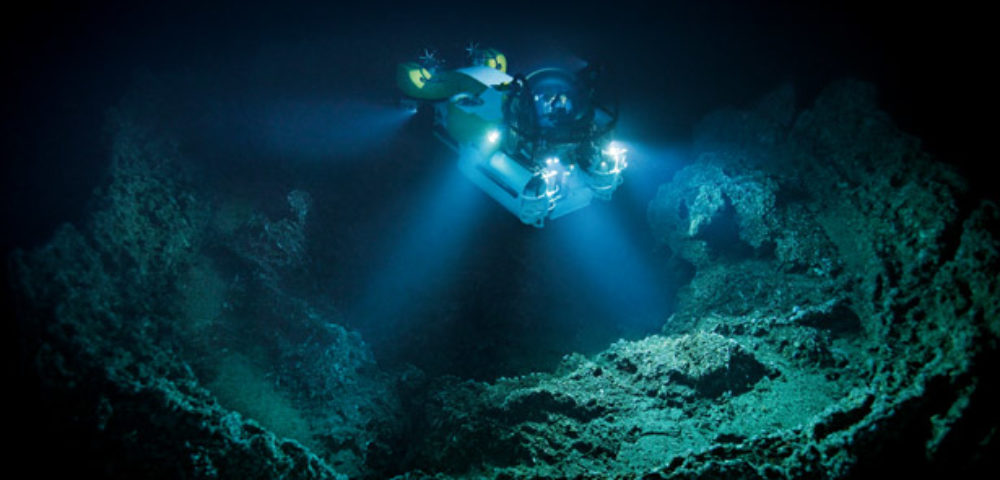
A submersible exploring the deep-sea. Photo credit: www.nationalgeographic.com/magazine/
Deep-sea habitats aren’t just spooky because they’re host to some of the most nightmare-inducing fish species on the planet. With waters deeper than 1000 m that cover more than 60% of the planet, these habitats are still relatively unexplored by humans [1]. Despite this, recent technology has facilitated a better understanding of the deep-sea and the diversity of life it contains; life that has adapted to a cold environment with no sunlight. Remotely operated submersibles, underwater video, deep-sea submarines, and sonar have given us the ability to travel or observe these environments and the truly unique organisms that live there. Many of the fish species that live in these environments grow slowly, are long-lived (some live up to 200 years!), and they can’t reproduce until they’ve had several to many years to grow [2]. For example, female White Anglerfish are around 14 years old when they become sexually mature, and are almost a meter long [3]! Many deep-sea fish species have adaptations to this spooky environment. For example, several species have morphological adaptations, such as big scales and weak skin, to the low-turbulence you find in the deep-sea [1]. Another unique adaptation to the deep-sea is an enhanced ability to see bioluminescence [4]. Bioluminescence is light produced and emitted by living organisms, and it’s not uncommon for deep-sea organisms to produce light.
Up next: Shipwrecks!
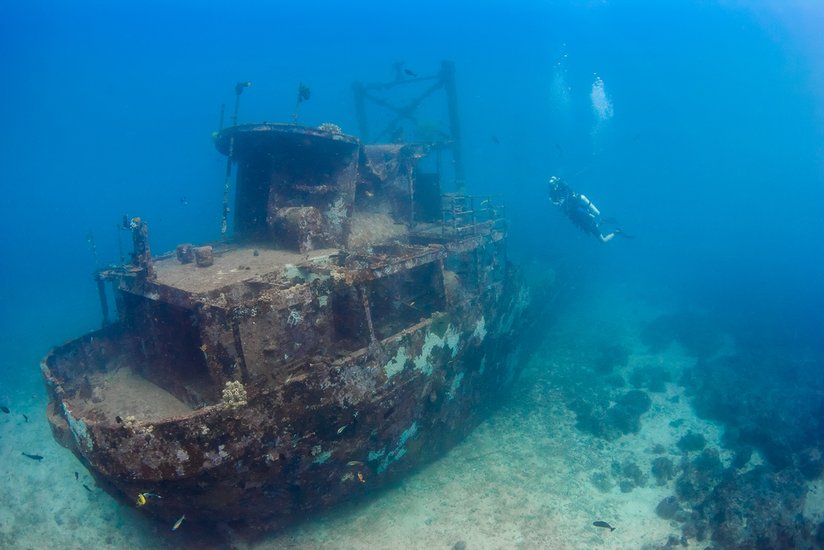
An artificial reef created by a shipwreck. Photo credit: Richard Whitcombe/Shutterstock
Shipwrecks have been the focus of some ghostly, eerie tales. But they also make great fish habitat! Sunken ships can provide habitat similar to trees that have fallen into lakes, streams, and other water bodies [5], and can create reef-like habitat by increasing habitat complexity [6]. These habitats generally attract fish, and have higher fish species diversity and abundance than the soft-bottomed, low-complexity habitats around them [6], in part because they provide a higher surface area for algae, bacteria, and sessile organisms to attach to. This can increase the amount of food available for fish. Additionally, these sunken vessels can provide cover from predators for fish. In some instances, ships may be intentionally sunk to create fish habitat (http://sciencenetlinks.com/science-news/science-updates/ships-reefs/). In these cases, the ships are usually cleaned and prepared to be sunk so that no toxic or harmful chemicals are released during the sinking.
Above, I’ve listed some examples of some spooky places where fish live, and hopefully it has you hooked on fish habitat and makes you want to goby a fish for Halloween! I hope you and your groupers don’t have a hoki time. Okay, I’ll stop with the fish puns now . . .
References:
[1] Roberts, C.M. 2002. Deep impact: the rising toll of fishing in the deep sea. Trends in Ecology and Evolution 17(5): 242-245. [2] Yoklavich, M.M., Greene, G.H., Cailliet, G.M., Sullivan, D.E., Lea, R.N., Love, M.S. 2000. Habitat associations of deep-water rockfishes in a submarine canyon: an example of natral refuge. Fishery Bulletin 98(3): http://www.biomedsearch.com/article/Habitat-associations-deep-water-rockfishes/64909354.html. [3] Duarte, R., Azxevedo, M., Landa, J., and Pereda, P. 2001. Reproduction of anglerfish (Lophius budegassa Spinola and Lophius piscatorius Linnaeus) from the Atlantic Iberial coast. Fisheries Research 51: 349-361. [4] Douglas, R.H., Partridge, J.C., and Marshall, N.J. 1998. The eyes of deep-sea fish 1: Lens pigmentation, tapeta and visual pigments. Progress in Retinal and Eye Research 17(4): 597-636. [5] Steimle, F.W., and Zetlin, C. 2000 Reef habitats in the middle Atlantic Bight: Abundance, distribution, associated biological communities, and fishery resource use. Marine Fisheries Review 62(2): 24-42. [6] Consoli, P., Martino,, A., Romeo, T., and Sinopoli, M. 2014. The effect of shipwrecks on associated fish assemblages in the central Mediterranean Sea. Journal of the Marine Biological Association of the United Kingdom 95(1): 17-24.
